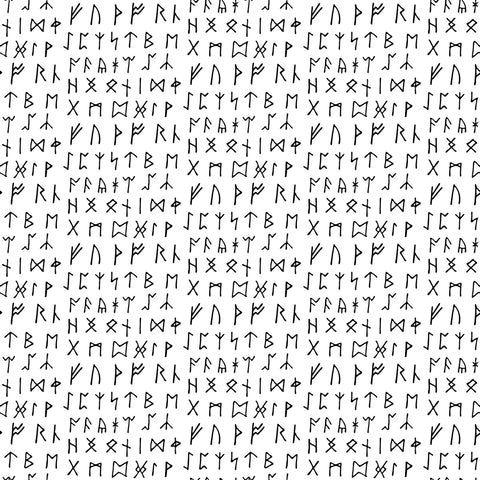The Vikings were probably one of the most diverse people in ancient times. They conquered vast tracts of land spreading from Canada to the Baltic Sea. But how did they manage to communicate despite their spread?
Well, it's quite simple- the Vikings had a somewhat common language. The rest of this article looks at how this language started, its history, and how it became so diverse.
While the Viking's language had a common ancestry, it was diverse and would vary depending on where and when they were and what people they were. Basically, they spoke just about any language popular in their area.
Old Norse
The Vikings mainly spoke Old Norse, common in Scandinavia and other Nordic settlements. Old Norse first appeared in the 8th Century as the Proto-Norse language. Proto-Norse later developed into Old Norse and spread between the 9th to the 13th Century.
There were dialects within the same language- Old East Norse, Old, West Norse, and Old Gutnish. All These languages form what is spoken in modern Scandinavian languages today.

Old West Norse
The Old West Norse was created from Old Norwegian and Icelandic languages. It is a common dialect found in the British Isles in Scotland, England, Norway, and the Isle of Man.
Old East Norse
The Old East Norse was common in Sweden, Denmark, Kievan Rus', and eastern England.
Old Gutnish
This language was spoken in the Swedish Isle of Gotland. The Old Gutnish language has its roots in one of the extinct East Germanic languages, Gothic.
The Runic Language
The first runic language spoken during the Proto-Norse days was called Elder Futhark. Runic is the written form of the Old Norse language, and the Vikings used to inscribe the letters on leather, metals, stones, and bones.
However, Vikings wrote messages on the famous runestones when the language developed. The first runic inscriptions were discovered roughly in the 5th Century.
Evidence shows runic inscriptions spread all over Europe from Russia to Normandy and covered the British Isles. The stones often contained commemorative messages such as names of dead family members, a small story about the land they own, etc.
Icelandic Language
Icelandic is a modern language originating from the Vikings in the 9th Century. A wider share of Icelandic language evidence is in written form. Like Old Norse, the Icelandic language has many other dialects influenced by Gaelic and Danish.
Old Norse as a Lingua Franca
Though Old Norse was a common language connecting Scandinavian people during the Viking era, most Nordic countries would have been polyglots. But as Vikings continued to conquer more nations, they brought along their language. Old Norse eventually blended with so many local languages, including Old English. Yes. Modern English has some words borrowed from the Old Norse language. Here are a few examples:
- Skin (skinn)
- Birth (byrðr)
- Same (sami)
- Cake (kaka)
- Arm (armr)
Other modern languages that had their influence by way of Viking invasions include:
Danish - mainly spoken in Denmark, Danish has roots in Old East Norse. It is also a common language in the US, South America, and Scandinavia.
Faroese - this language is spoken in Faroe islands. It is quite similar to modern Icelandic
Norwegian - primarily spoken in Norway and one of the languages derived from the germanic language family. Norway also speaks the Sami language, common to the Sami people.
Icelandic - we already mentioned the Icelandic language earlier.
Swedish - the national language of Sweden and is spoken by over 10 million people across the globe. However, it is mostly spoken by the people of Finland and Sweden.
According to Norse mythology, Old Norse slowly began to disappear when the Vikings became international. Scandinavians got introduced to the Roman alphabet in the 11th Century, and Christianity was born. Both the runic script and Roman were used side by side until the 14th to 15th Century.
It is also important to note the languages that existed during the Viking age. These languages may not have been primarily spoken by Vikings but should have a couple of borrowed words. They include Finnish, old Russian, Gaelic, Sami, and Celtic.
Old Norse Evolution And Scandinavian Influence
So, if everyone spoke Old Norse, does that mean all Scandinavian people said the same language or at least understood each other? Well, Danes, Norwegians, and Swedes do understand each other at some point, mostly due to their linguistic heritage.
The Gray Goose Law is a 12th-century Icelandic text that all Old Norse people speak donsk Tunga (the Danish tongue). But what does an old Icelandic law have to do with Old Norse? Well, ever since, Icelandic and Faroese are the only people who have had the least change in the past a thousand years. In short, the present-day Icelandic speakers can still read Old Norse, although the spelling and wordings may have changed a bit.
How did the Old Norse language disappear from its international spread and conquer? First, it was partly nibbed down by several fronts in Europe, including Brian Boru in Ireland, William the Conqueror in England, and Mongol hordes. Then, the Norse people were absorbed into the local community once this occurred, except for the Faroe Islands.
The influence of Old Norse was so strong that a form of Norse called Norn was still in use in the Islands of Shetland and Orkney. But when the Scots invaded these islands, their Gaelic language took over. Sadly, Norn only lasted a few years, and the last speaker and inhabitant died in 1850.
Can We Still Learn Language Of The Vikings Today?
Yes. It is possible to learn the Viking language today. There are a few ways one can understand this ancient language, including language guides, videos, or taking classes with the help of an instructor. Since spoken Old Norse is almost similar to English, it is easier to learn the said form than the written form. But you can still learn both the written and verbal forms of the language today.

